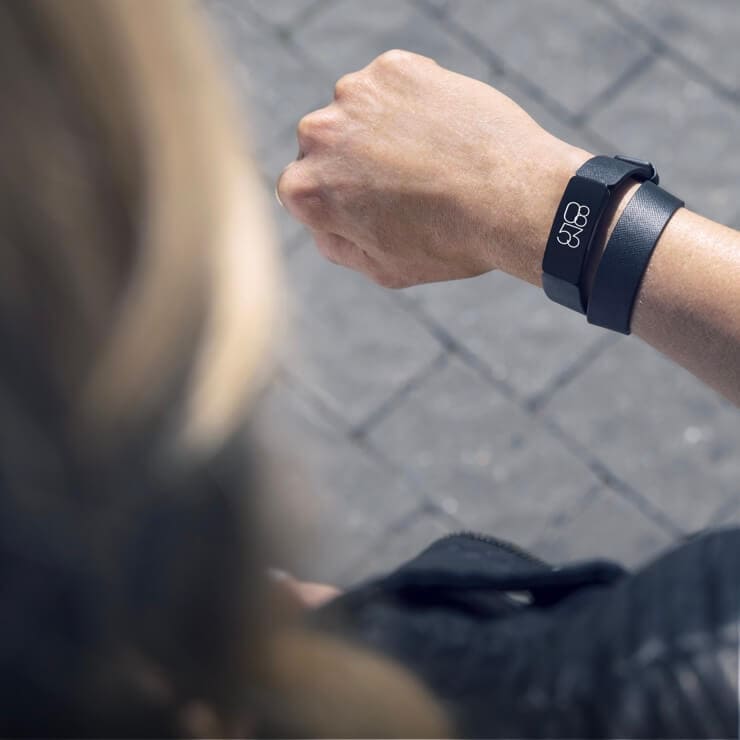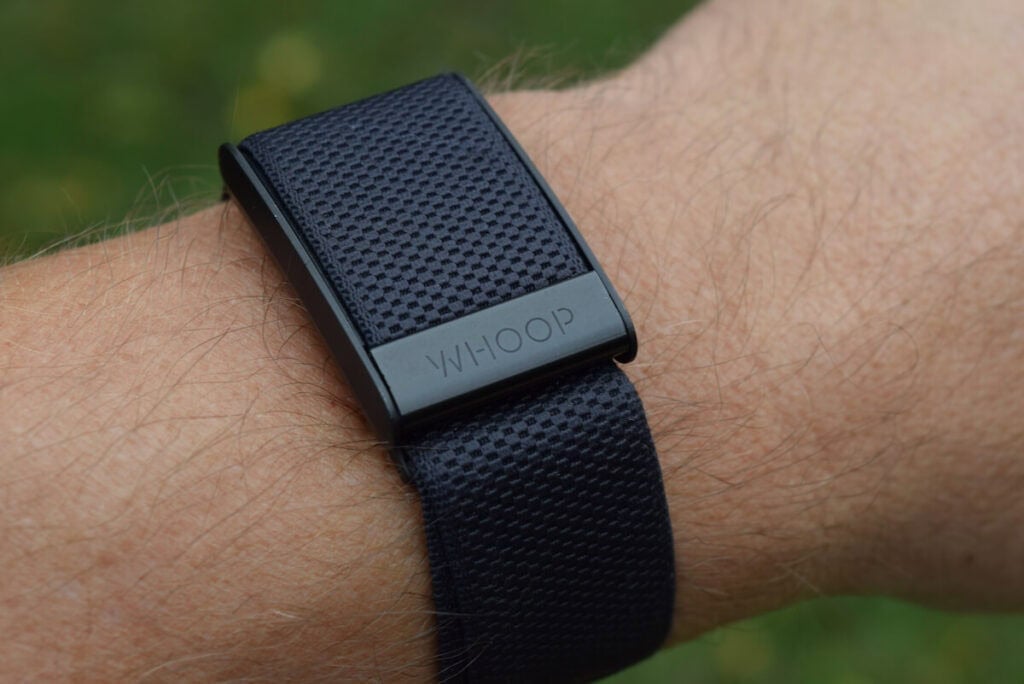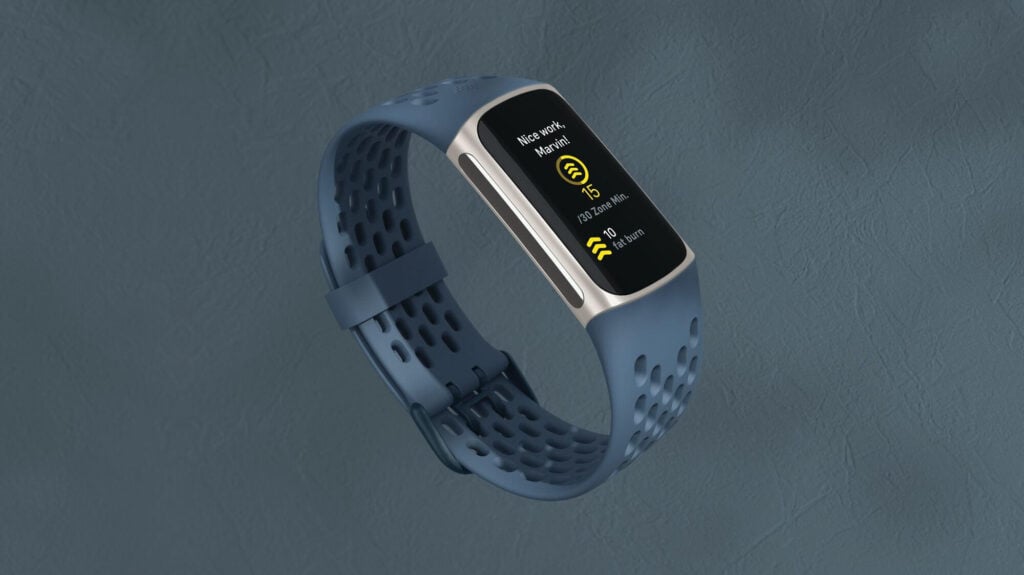How many calories did I burn? Which workout got my heart rate up most effectively? How helpful was this workout, overall? If these questions sound familiar, you might benefit from a piece of wearable fitness technology.
Fitness trackers, smartwatches, and other forms of these products have flooded the market in recent years. All come at different price points, and many offer different functionalities, ranging from basic step and heart rate tracking to advanced features that monitor sleep quality.
Today we’re covering the different levels of tracking, discussing their benefits for your workout, and taking a closer look at how each one plays a part in helping you live an active life.
Whether you’re a proud FitBit owner looking to learn a little more about your device or a fitness tracker newbie trying to decide which features you really need, we’ve got you covered. Read on for a complete run-down.
What is Wearable Fitness Technology?
The Basics: Step and Heart Rate Trackers
At this point, all fitness trackers on the market offer at least two basic functions: tracking steps and heart rate.
First, let’s talk step trackers: if you’re a runner, take lots of long walks, or are trying to get moving a little more, a step tracker is great.

Where it doesn’t shine as brightly are gym workouts. When you’re bench pressing or hitting those Jelly-Bell dumbbells hard, a step counter isn’t going to help you figure out much about your workout.
In contrast, a heart rate tracker is a great addition to your gym sesh. It measures how hard your heart is working at any given time, which can be a great tool to determine which workout is getting your heart pumping for maximum effect.
A word of caution here: while almost all fitness trackers have pretty reliable step tracking capabilities, some lower quality trackers offer slightly less accurate heart rate info. They’re still likely to be in the general range of your heart rate, but you might want to invest in a higher quality tracker that gives you more accurate results.
A Step Up: Calorie Counters and Workout Trackers

Going a level up from basic step and heart rate tracking capabilities, many watches and trackers now count calories burned and offer workout options to help you get an accurate picture of how you’re doing.
A calorie counter can be a great feature if you’re looking to balance calorie intake and burn rate. You’ll need to check your calories before and after your workout to establish a baseline and calculate how many you burned.
If you’re serious about getting the most accurate calorie results, a tracker with workout functionality might be just your cup of tea.
Many watches now offer an exercise section. You can choose the type of workout you’re doing (whether it’s swimming, HIIT, or punching your HeroStrength Action Bag), set the duration, and get an estimate of burned calories and heart rate for that session.
If you spend a lot of time in the gym and want to get an accurate picture of what all those hours are doing for you, a tracker with workout functionality can be just the ticket.
However, remember that this feature requires user engagement. You’ll need to remember to set the tracker up properly each workout, so if you don’t like remembering one more thing, this feature may not be helpful for you.
The Most Advanced: Sleep and Body Rhythm Trackers
We at Hampton can tell you what you’re doing in the gym is a huge part of an active and healthy life. However, making the right choices for your body doesn’t stop outside the doors of your favorite workout spot.
More advanced fitness trackers recognize this, and more and more companies offer watches that go a step beyond heart rate, calories, and other in-the-moment tracking.
These devices can track your sleep and body rhythm to give you a holistic picture of your overall wellness.
The pros? These features truly are amazing. You can learn what time is best to go to bed to get 8 hours of sleep, whether certain factors affect your sleep, and even more details about your body rhythm, such as the ups and downs of menstrual cycles.
The downsides? Most are related to inconvenience–you’ll need to wear your tracker to bed, and most in-depth programs require you to enter regular information. In addition, to get a truly reliable tracker that includes these details, you’ll be spending more compared to the basic models.
Ultimately, it’s up to you to decide whether these features fit your lifestyle.
What Are Some Examples of Wearable Technology?
Fitbit Inspire 2
If you’re looking for a basic fitness tracker that won’t break the bank, check out the Fitbit Inspire 2.
This basic little tracker is under $100 and gives you insight into your steps and heart rate. While it doesn’t come with the techy frills some other devices have, like music-playing capabilities and GPS, the Inspire 2 is great if you’re starting out and want a reliable basic tracker.
Whoop 4.0
If you’re a dedicated athlete looking to get the most out of a workout, look into Whoop 4.0.
This tracker doesn’t actually come with a screen. Instead, it’s designed for serious athletes who want to stay closely in tune with their bodies.
It effectively tracks your heart rate and the level of strain your body’s going through. It also includes a definitive health monitor overview to help you train at your best level.
As far as pricing, the band itself is free, but you’ll need to join Whoop to get it. Pricing is around $30 per month, though you can get yearly deals.
Fitbit Charge 5
For a piece of wearable fitness technology that’s next-level, meet the Fitbit Charge 5.
If you’re willing to pay extra for a top-quality tracker, this device delivers. It helps you stay tuned to your body’s rhythm by measuring stress and tracking heart health. It comes with built-in GPS so you can track your workouts, and its sleep tracker is extremely accurate.
At $180, the price point is a bit steeper than other models, but Fitbit frequently runs sales, so keep your eyes peeled.

The short and sweet? Wearable fitness technology can be a great workout tool for anyone who’s ever thought, “Well, that workout was great. I wish I knew more about what it did to my body.”
Today’s market offers products with a dizzying array of features, so you’ll need to choose the tracker with the features that work for you.
Our advice? Don’t overspend on features you’ll never use, but don’t underspend on a piece of tech junk that won’t reliably track what you really care about.
Decide how you want to use your tracker, and find the product that delivers in those specific areas.
